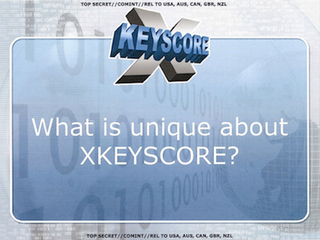NSA Leaks 2013 - A Timeline of NSA Revelations
Everything you need to know about the NSA spying scandal, beginning with the first documents leaked by whistleblower Edward Snowden in June 2013.

Since June 6, reporters at The Guardian and a handful of other news outlets have published a slew of articles reporting on top-secret documents leaked by National Security Agency whistleblower Edward Snowden. Only a few of these documents have been made public. Nevertheless, the reporting paints a picture of a global surveillance complex operated by the NSA that is massive in its reach and precision.
In a forest that big, sometimes the trees get lost. That's why we've created this timeline, which highlights some of the most significant NSA revelations and why they matter.
NSA collecting phone records of millions of Verizon customers daily
Reported by The Guardian on June 5, 2013
Why It Matters: In the first reported case of widespread domestic surveillance under President Barack Obama, The Guardian revealed that the NSA was collecting Verizon customers' telephone metadata, thanks to a court order issued by the Foreign Intelligence Surveillance Court (FISA) to Verizon Business Services, the commercial-customer division of the landline provider. Apparently, Verizon Business Services has been receiving such orders since 2006. The news site also published the FISA court order for Verizon customers' phone records between Apr. 25 and July 19 2013.
Additional Commentary and Analysis:
- Based on What We Know, is the NSA Verizon Request Legal? (NPR)
- NSA's Verizon Spying Order Specifically Targeted Americans, Not Foreigners (Forbes)
NSA PRISM program taps in to user data of Apple, Google and others
Reported by The Guardian and the Washington Post on June 6, 2013
Why It Matters: We learned of PRISM, a top-secret surveillance program that gives the NSA access to the information exchanged across Google, Facebook, Apple, and other U.S. internet communication platforms. The government was quick to clarify that all NSA programs, including PRISM only targets foreign nationals, as U.S. law protects the privacy of citizens and legal residents.
Sign up to get the BEST of Tom’s Guide direct to your inbox.
Upgrade your life with a daily dose of the biggest tech news, lifestyle hacks and our curated analysis. Be the first to know about cutting-edge gadgets and the hottest deals.
Additionall Commentary and Analysis:
- Edward Snowden identifies himself as source of NSA leaks (The Guardian)
- Interview with NSA Whistleblower Edward Snowden: 'I don't want to live in a society that does these sorts of things.' (Laura Poitras, YouTube)
Microsoft handed the NSA access to encrypted messages
Reported by The Guardian on July 11, 2013
Why It Matters: The nature of relations between the NSA and the companies involved in PRISM is still unclear, but according to this report Microsoft appears to work more closely with the NSA than other online media platforms to give the agency access to its systems. However, it's important to note that The Guardian's report on Microsoft was light on details, and the news outlet did not publish any actual leaked documents on the subject.
- Google Encrypts Data Amid Backlash Against NSA Spying (Washington Post)
- Microsoft and Yahoo Voice Alarm Over NSA's Assault on Internet Encryption (The Guardian)

Reported by The Guardian on June 21, 2013
Why It Matters: The most significant part of this live chat was Snowden saying that "Encryption works. Properly implemented strong crypto systems [meaning encryption, or scrambling of digital data] are one of the few things that you can rely on. Unfortunately, endpoint security is so terrifically weak that [the] NSA can frequently find ways around it." At this time Snowden also officially denied that he's working with Russia or China.
Additional Commentary and Analysis:
- Can You Hide Anything from the NSA? (Tom's Guide)
- Statement from Edward Snowden in Moscow (WikiLeaks)
- U.S. Tells Russia Snowden Won't Face Death Penalty (Al Jazeera)
GCHQ taps fibre-optic cables for secret access to world's communications
Reported by The Guardian on June 21, 2013
Why It Matters: Technically, this isn't a revelation: The U.S. and U.K. intelligence communities have a long history of sharing intelligence. But The Guardian's reporting on more Snowden documents describe a program called Tempora, in which British spy agency GCHQ (the British equivalent to the NSA) taps into the network of cables that comprise phone and Internet communications. Britain, which has more legal ability to surveil Americans than the NSA does, shares the information gathered through Tempora with the NSA.
Additional Commentary and Analysis:
- U.K. Spy Agency Secretly Taps Over 200 Fiber-Optic Cables, Shares Data with NSA (Wired)
- The Creepy, Long-Standing Practice of Undersea Cable Tapping (The Atlantic)
- A simple guide to GCHQ's internet surveillance programme Tempora (Wired.co.uk)

Xkeyscore: NSA tool collects 'nearly everything a user does on the internet'
Reported by The Guardian on July 31, 2013
Why It Matters: According to a 2008 NSA presentation published by The Guardian, XKeyscore is a program that NSA analysts use to search through the massive amounts of data that pass over its worldwide servers every day. Using search terms such as a name, email address, IP address or more, the NSA can quickly gather information on a specific target.
Additional Commentary and Analysis:
- New Snowden leak: NSA program taps all you do online (CNN)
- Latest Leak Shows NSA Can Collect Nearly Any Internet Activity Worldwide Without Prior Authorization (TechDirt)
- NSA Director Defends Surveillance to Angry Audience (Tom's Guide)
NSA broke privacy rules thousands of times per year, audit finds
Reported by The Washington Post on August 15, 2013
Why It Matters: An internal NSA document and a FISA court reprimand, both published by The Washington Post, reveal that individuals at the NSA overstepped the organization's legal authority on numerous occasions, usually involving the surveillance of American citizens. The infractions occurred both at the behest of superiors and, in at least one case, to spy on a former spouse. The Post also published a "What is a violation?" training presentation used by the NSA, and a presentation teaching NSA agents how to rationalize their surveillance decisions to FISA and other NSA overseers.
Additional Commentary and Analysis:
- NSA Officers Spy on Love Interests (Wall Street Journal)
- Court: Ability to police U.S. spying program limited (Washington Post)
- Lawmakers Probe Willful Abuses of Power by NSA Analysts (Bloomberg)
US and UK spy agencies defeat privacy and security on the internet
Reported by the New York Times and The Guardian on September 5, 2013
Why It Matters: This is the most significant reveal yet. We now know the NSA has been working for years to undermine the encryption and other security standards employed across the vast majority of the Internet's architecture. The Guardian also published an NSA document explaining Project Bullrun, the codename for its efforts to "defeat encryption," and a document about how its "Sigint" program tries to insert backdoors or vulnerabilities in security products and standards.
Additional Commentary and Analysis:
- Why the Latest NSA Leak is Scariest of All (Tom's Guide)
- NSA Hasn't Cracked Basic Internet Encryption (Yet) (Tom's Guide)
- Of course NSA can crack crypto. Anyone can. The question is, how much? (Ars Technica)
NSA can spy on smartphone data
Reported by Der Spiegel on September 7, 2013
Why It Matters: The article by German magazine Der Spiegel is frustratingly vague, and contains little that wasn't already known or suspected. The most important information from this reveal is that the NSA appears to have cracked BlackBerrys, previously thought to be the most secure commercially available smartphones. Further, the article suggests that NSA might still have trouble getting into Apple's iPhones.
Additional Commentary and Analysis:
- How the NSA Gets Into Your Smartphones (Tom's Guide)
- The Rest of the Snowden Files Should Be Destroyed (Slate)
- Keith Alexander: The Cowboy of the NSA (Foreign Policy)
Email jscharr@techmedianetwork.com or follow her @JillScharr. Follow us @TomsGuide, on Facebook and on Google+.
Jill Scharr is a creative writer and narrative designer in the videogame industry. She's currently Project Lead Writer at the games studio Harebrained Schemes, and has also worked at Bungie. Prior to that she worked as a Staff Writer for Tom's Guide, covering video games, online security, 3D printing and tech innovation among many subjects.
